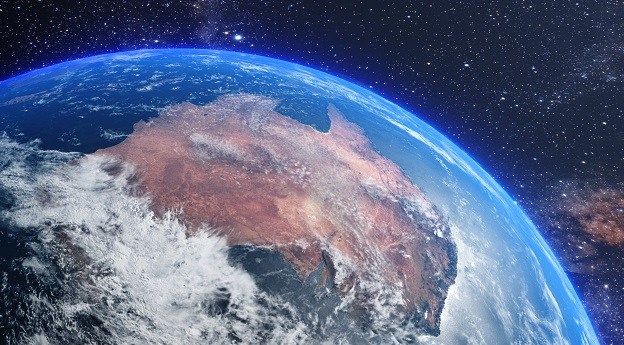
LeoLabs’ new space junk hunter in Central Otago, New Zealand. Image: LeoLabs.
LeoLabs has launched the first commercial radar service to track objects in Low Earth Orbit (LEO) smaller than 10 centimetres, located in New Zealand.
As access to space becomes easier, and satellites smaller than ever, objects close to Earth are at risk of becoming an existential threat to all space activity.
Novel solutions to removing space junk are under development, including spearing offending debris in orbit, or capturing and recycling it.
Californian Space Situational Awareness (SSA) firm LeoLabs has launched a new weapon in this expanding front –a precision radar to track space junk at a higher resolution than previously available.
“The Kiwi Space Radar raises the bar on addressing the threat of collisions that have never before been tracked in LEO,” said Michael Nicolls, co-founder and LeoLabs Chief Technology Officer.

The Kiwi Space Radar array in situ. Image: LeoLabs.
“By operating at a higher frequency than our earlier sensors, the KSR was designed to track an estimated 250,000 additional objects down to 2 centimeters in size. These objects account for most of the risk of collisons in space, and KSR is the first big step towards addressing that risk. It will enable thousands of new satellites to safely use LEO.”
In a major plus for Antipodean space ambitions, the new device is the first phased-array radar of its class to provide Southern Hemisphere coverage — meaning its automated search and discovery capabilities will be most useful to those attempting to reach orbit from up-and-coming launch sites in Australia and New Zealand.
“Locating the Kiwi Space Radar in New Zealand was a strategic decision for LeoLabs, and we are excited to become a full-fledged participant in this emerging space sector,” said Dan Ceperley, co-founder and CEO of LeoLabs.
“Our investment model is aligned with New Zealand’s vision of sustainable development and responsible stewardship of space. Through the leadership of the New Zealand Space Agency, and initiatives such as the Innovative Partnership program from the Ministry of Business, Innovation and Employment (MBIE), New Zealand is building what we believe to be one of the great space sectors for the next generation.”
The Kiwi Space Radar is located in the Central Otago region of New Zealand’s south island, and material released by LeoLabs indicates that it will be the first of a series of such instruments worldwide.
Stay up to date by getting stories like this delivered to your mailbox.
Sign up to receive our free weekly Spatial Source newsletter.













